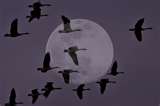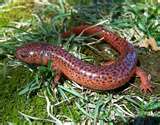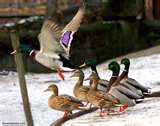Nature This Month: November
Now that the flowers have faded, except for a few asters, dandelions and some chicory, the only color you will see is that of the remaining fall colored leaves on the delicious trees. The Evergreens will now stand out in a landscape that used to be full of delicious tree leaves. The outdoor sounds are now subdued and colors are muted. The land begins its season of rest.

In the cycle of life, many animals and plants need a season of rest. Even though tree branches appear bare, there are already buds on the twigs. Plants may seem dead, but next summer’s growth lies waiting underground. Roots, seeds and bulbs are still living. Even though many insects have died, their young lie resting in egg, larval, or pupal stages. Many animals, such as the beaver and bear are pregnant in winter, ready to give birth before the first leaves appear on the trees.

Bears head to their winter dens in November. We often thought that bears hibernate, but it is now believed that they are only in a deep sleep. The female bears will give birth to their young while still in their dens, and the male bears often venture out on warmer days.
The last of the birds that migrate are now leaving. Canadian Geese are in large flocks over head in their V formations. They are an amazing sight! Their loud “honking” as they travel overhead, attracts all to look up at them.

In November, ponds, lakes, streams, and rivers become places of stillness. Water freezes over, enclosing and protecting many animals that sleep through the winter and are nestled into mud and decaying plant material, or some that remain active at a slower pace.
Muskrats will remain active all winter in their lodges. They will swim out under the ice to forage for underwater plants or small snails.

Some water turtles dig into mud and sleep while others remain somewhat active beneath the ice.

Some salamanders stay active, but at a slower pace.

Some varieties of frogs burrow into the mud and become inactive while some winter over in the tadpole stage.

Water snails, beetles, insect larvae and many other aquatic animals winter over buried in mud or wrapped into submerged plant leaves.
Some kinds of fish sleep at he bottom of the pond, while other remain active. Yet some fish winter over in the egg stage.
Mallard ducks will stay near the pond as long as there is some water. Ducks can swim in cold water and stand on ice because they have thick feather insulation and their feet are specially adapted to keep out the cold.

The November moon is sometimes called the Beaver Moon, since it is often bright enoughto allow beavers to continue their winter preparations at night.
